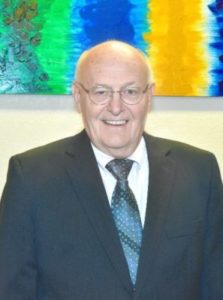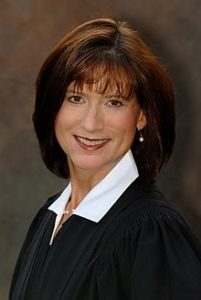7th Circuit Extends New Standing Rules, But Open Dissent Develops
Sharp  Thinking
Thinking
No. 209 Perspectives on Developments in the Law from Sharp-Hundley, P.C. May 2022
7th Circuit Extends New Standing Rules, But Open Dissent Develops
By John T. Hundley, Sharp Thinking Editor
In past issues of this newsletter, we’ve covered the new standing rules handed down by the Seventh U.S. Circuit Court of Appeals in litigation under the Fair Debt Collection Practices Act, 15 U.S.C. §§ 1692 et seq. (FDCPA), and in federal litigation generally. See “7th Circuit Hands Down New Rules on Standing”, Sharp Thinking No. 192 (January 2021); “New 7th Circuit Rules on Standing Continue Apace”, No. 194 (March 2021). We’ve even noted some apparent differences between the circuit judges with respect to those new rules. See “Cracks Develop in New 7th Circuit Standing Doctrine”, No. 196 (May 2021).

Hundley
Those apparent cracks opened wide last month with a panel’s 2-1 decision in Pierre v. Midland Credit Mgmt., Inc., 29 F.4th 934 (7th Cir. 2022). Circuit Judge David F. Hamilton dissented from the result in Pierre, voicing opposition to many of the circuit’s recent standing decisions and openly inviting Supreme Court arbitration of what he saw as a gaping split between the circuit courts of appeal.
The Setting: In Pierre, a servicer of a time-barred debt to an assignee of the consumer’s original credit card issuer sent a letter to the consumer offering to “settle” the time-barred debt for a fraction of its face amount. The letter did not threaten suit; in fact, it stated that the servicer would not sue (but apparently did not make the same promise on behalf of the assignee of the debt). The consumer sued under the FDCPA, representing a class of persons who had received such letters. A jury found in favor of the consumer and the class, awarding statutory damages totaling $350,000. (No out-of-pocket damages were claimed except the cost of lawyers.) The defendant appealed. The Seventh Circuit reversed on standing grounds.

Sykes
Majority Opinion: The majority opinion, written by Chief Judge Diane S. Sykes, is notable in its extension of the court’s earlier doctrines to “psychological states induced by a debt collector’s letter”. Worry, confusion and emotional distress, the majority said, are insufficient injuries to confer standing in the FDCPA context and, by implication under other legislatively-created schemes. What is required for “legislatively identified harms” is a “close relationship in kind to those underlying suits at common law.” “Making a call to a debt collector is not closely related to an injury that our legal tradition recognizes as providing a basis for a lawsuit,” Sykes wrote. “Nor is seeking legal advice. . . . The concreteness requirement [of standing] would be an empty one if all it took was contacting a lawyer and filing suit.”
The majority noted that the defendant’s letter “might have created a risk that Pierre would suffer a harm, such as paying the time-barred debt.” But, it said, a risk is “not enough to establish an Article III injury in a suit for money damages,” distinguishing suits for injunctive relief.
Hamilton Dissents: According to Hamilton, most of the Seventh Circuit standing decisions since 2020 have gotten it all wrong. Although those cases say their results are required by Supreme Court decisions, Hamilton said the Seventh Circuit decisions “have erred by failing to give the judgments of Congress the ‘due respect’ the Supreme Court’s precedents call for.” “As the Supreme Court said in Spokeo [Spokeo, Inc. v. Robins, 578 U.S. 330 (2016)], Congress may ‘elevate to the status of legally cognizable injuries concrete, de facto injuries that were previously inadequate in law.’”
The circuit’s decisions also “have erred by overlooking close historical parallels” for remedies for intangible harms, Hamilton said. He devoted a substantial portion of his 34-page opinion to documenting the instances in which the law has recognized causes of action for intangible harm. On the distinction which the majority drew between money damages and injunctive relief in the case of merely threatened harm, Hamilton analogizes to the distinction between assault and battery. The law long has recognized a damages action for an assault that stops short of a battery. Moreover, Hamilton likened the FDCPA’s statutory action for $1,000 to common-law awards of nominal damages. He found the FDCPA civil action “constitutional as applied to a host of violations that cause intangible but real injuries like Pierre’s.”
Overruling Urged: Hamilton openly urged the court to “overrule [the recent] cases’ rejections of standing based on emotional distress, anxiety, and other psychological harm caused by FDCPA violations.” However, he was not optimistic that that will occur. He feared “that our circuit has committed itself so thoroughly to this mistaken path that now only the Supreme Court can provide a correction.” Toward that end, he documented how other circuits have differed in their decisions, and concluded that the Seventh Circuit is “at the far end of a circuit split”.
 We think Hamilton has the better argument. The Seventh Circuit cases have given short shrift to Congressional intent and will in the process of following the Scalia-inspired federal standing doctrine. And Hamilton’s documentation of the instances in which the common law actually has allowed relief analogous to that afforded by the FDCPA is both impressive and persuasive.
We think Hamilton has the better argument. The Seventh Circuit cases have given short shrift to Congressional intent and will in the process of following the Scalia-inspired federal standing doctrine. And Hamilton’s documentation of the instances in which the common law actually has allowed relief analogous to that afforded by the FDCPA is both impressive and persuasive.
Moreover, Hamilton’s documentation of the circuit split seemed written with a petition for certiorari in mind. And Hamilton skillfully involves writings by Justice Clarence Thomas in his dissent. That suggests that a 6-3 vote in the Supreme Court in favor of the Seventh Circuit views might not be automatic.
Heather/SharpThinking/#209
